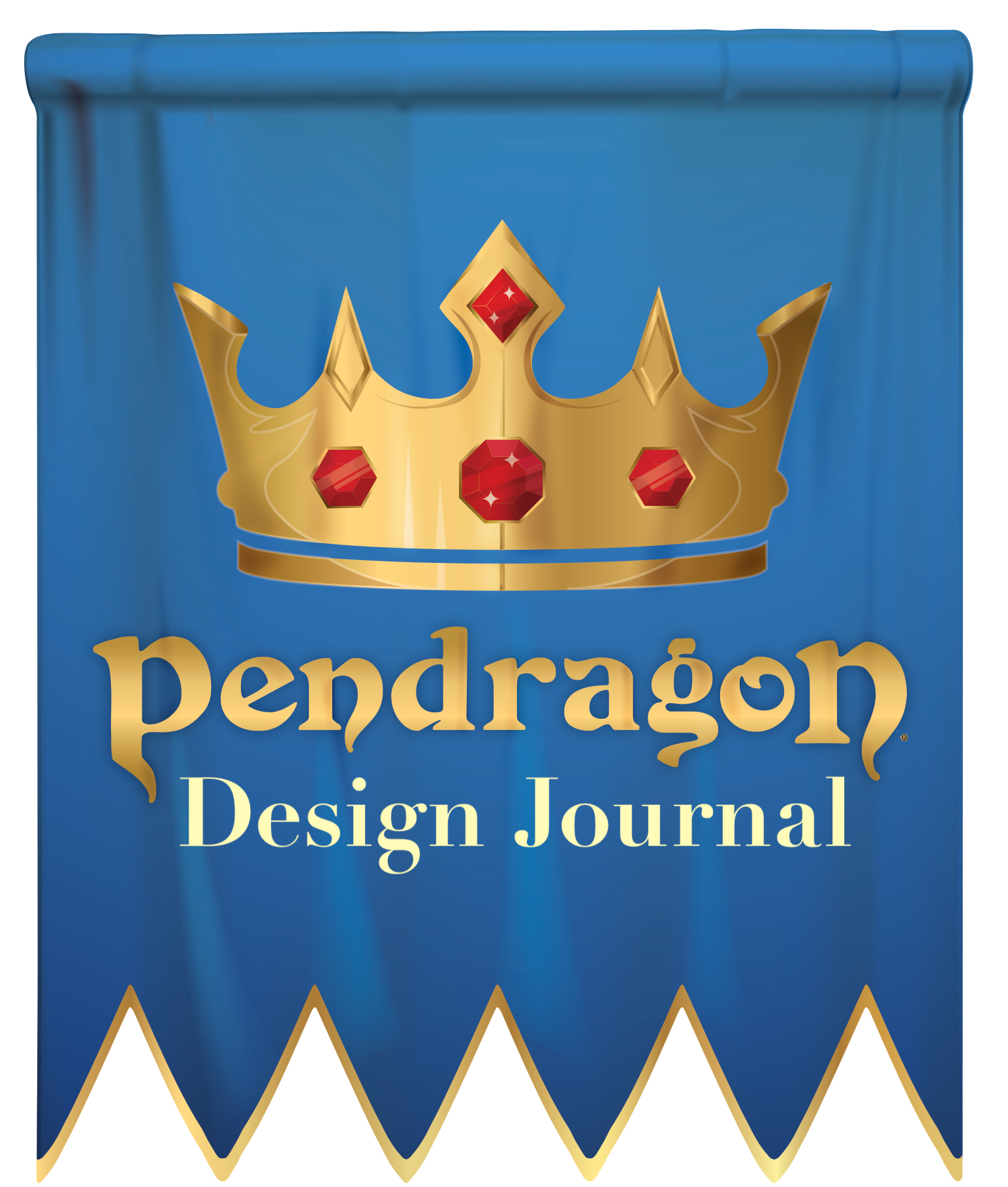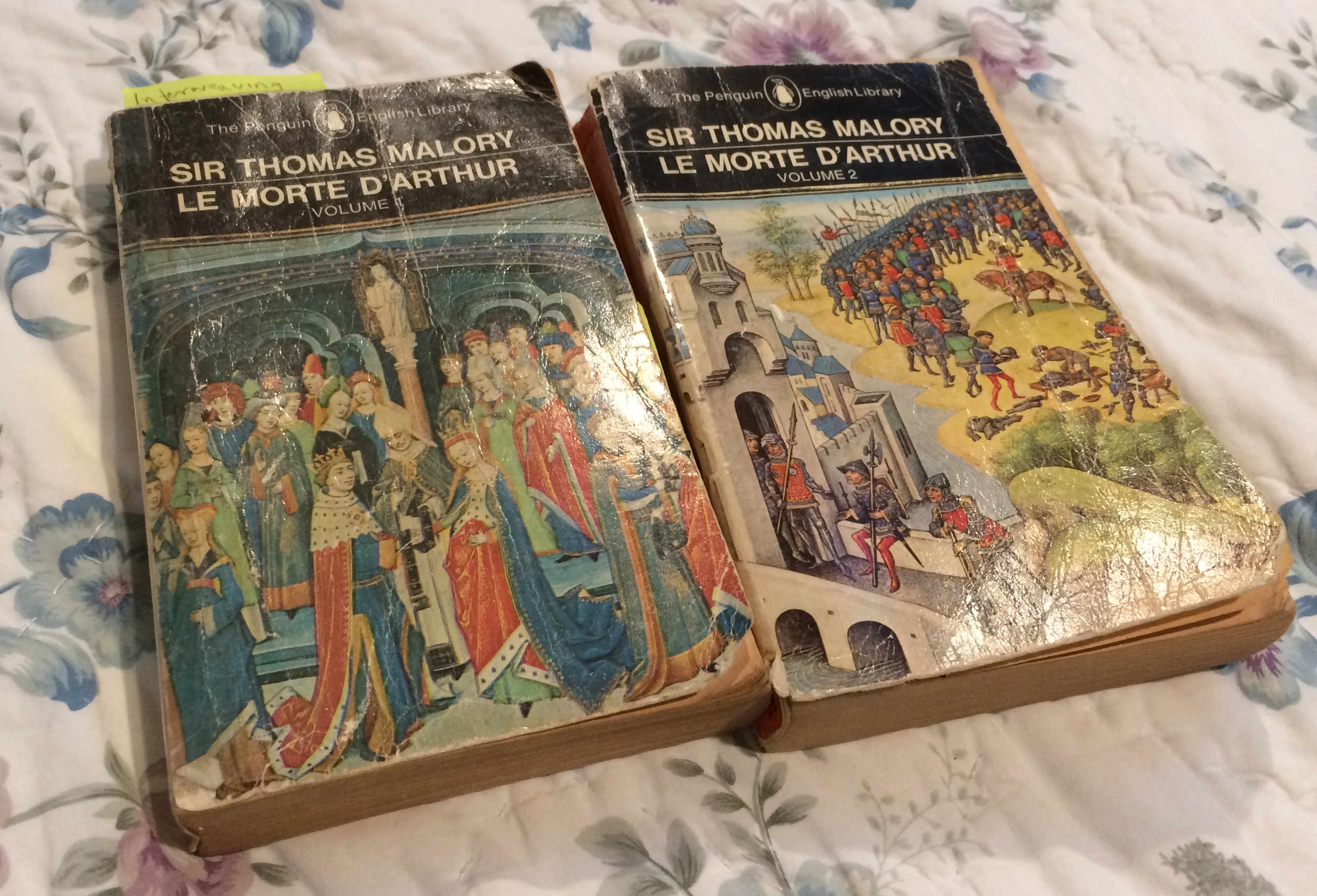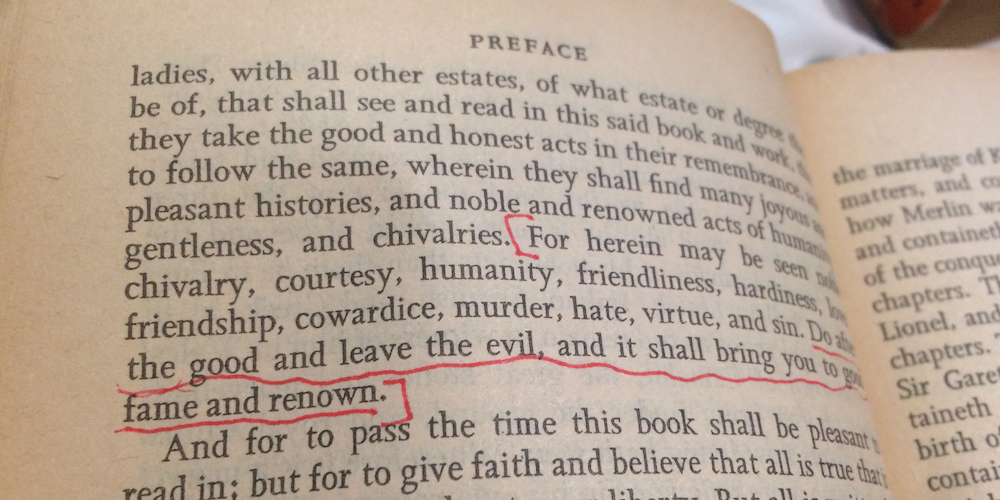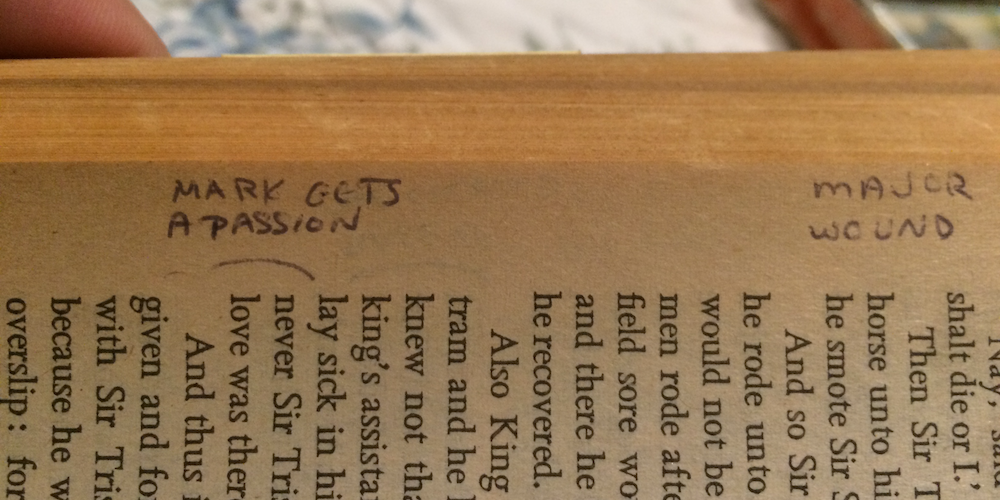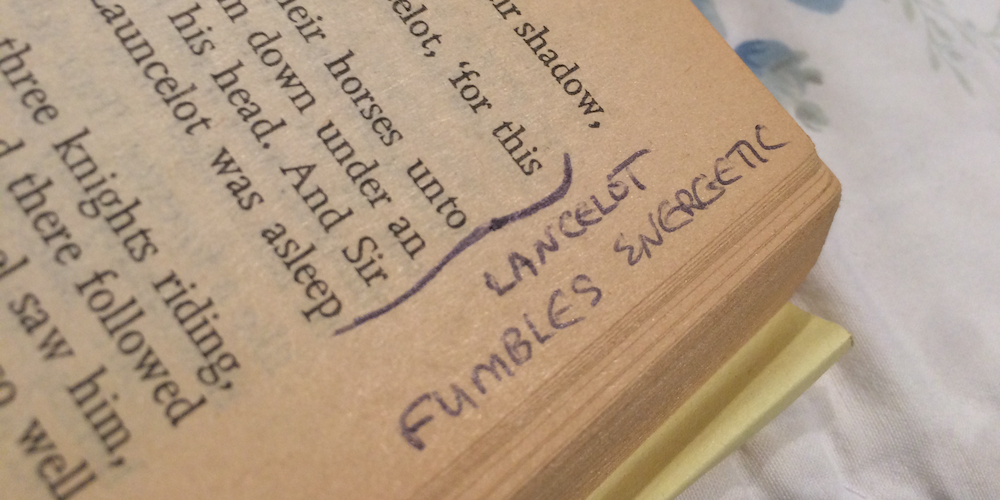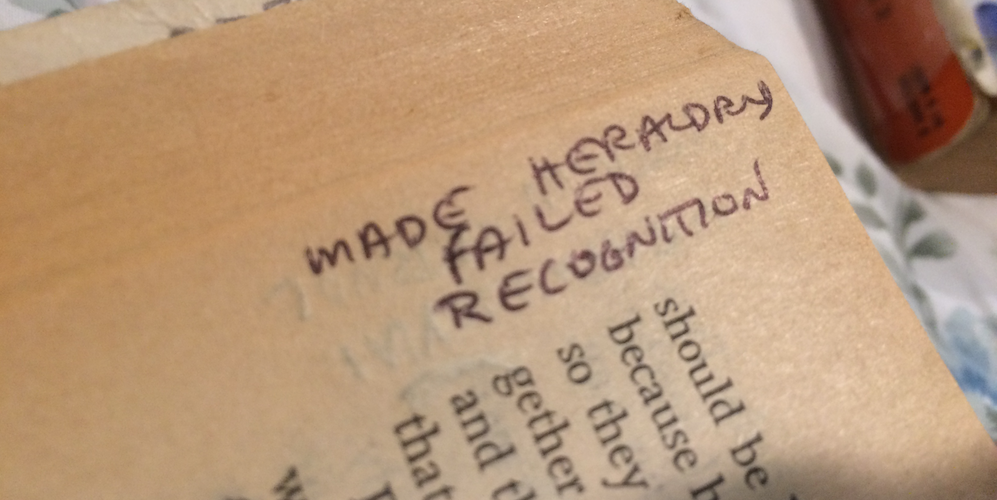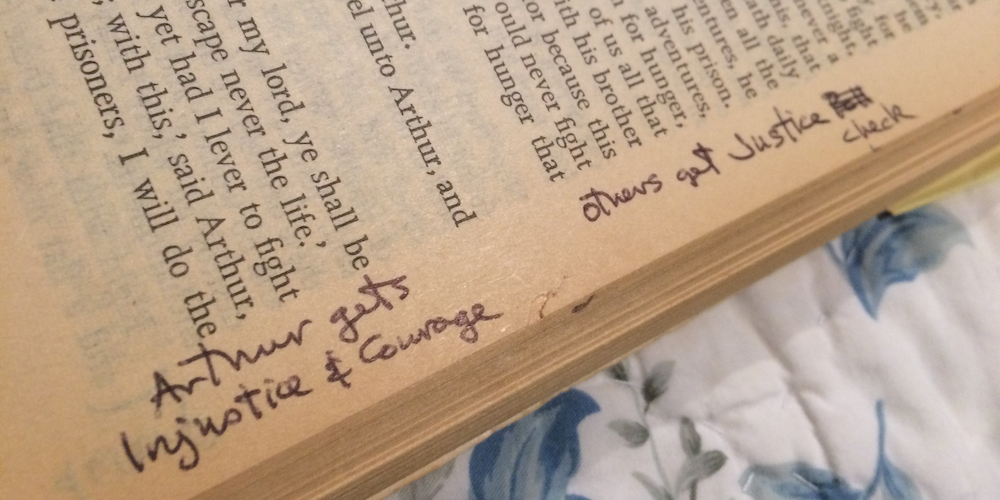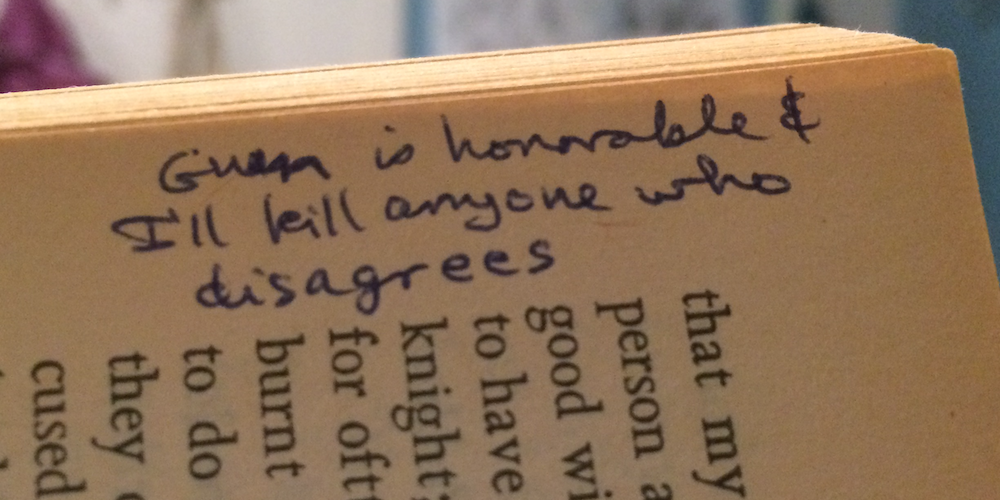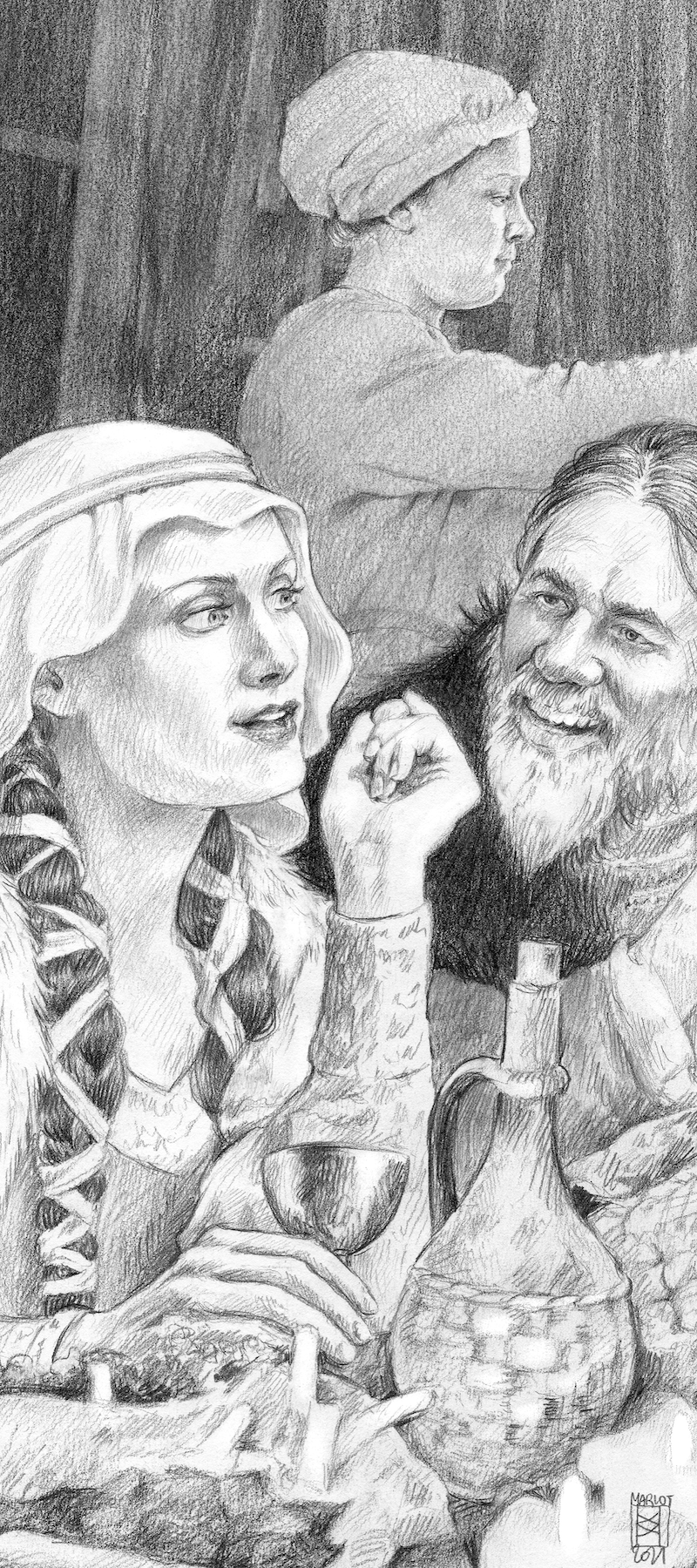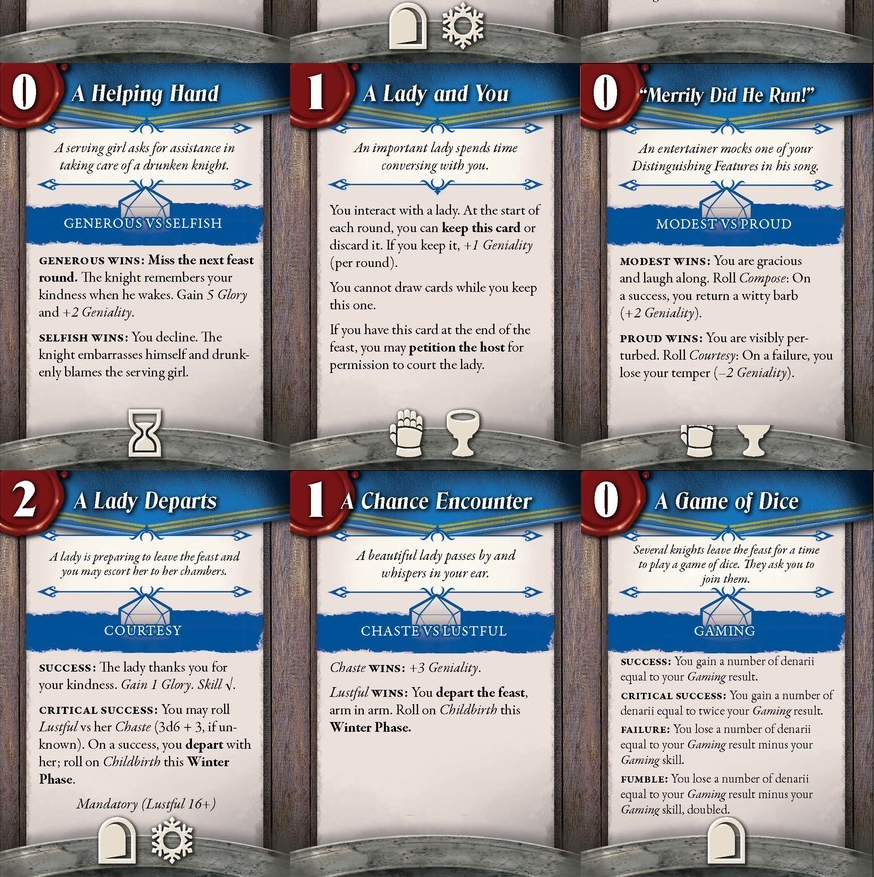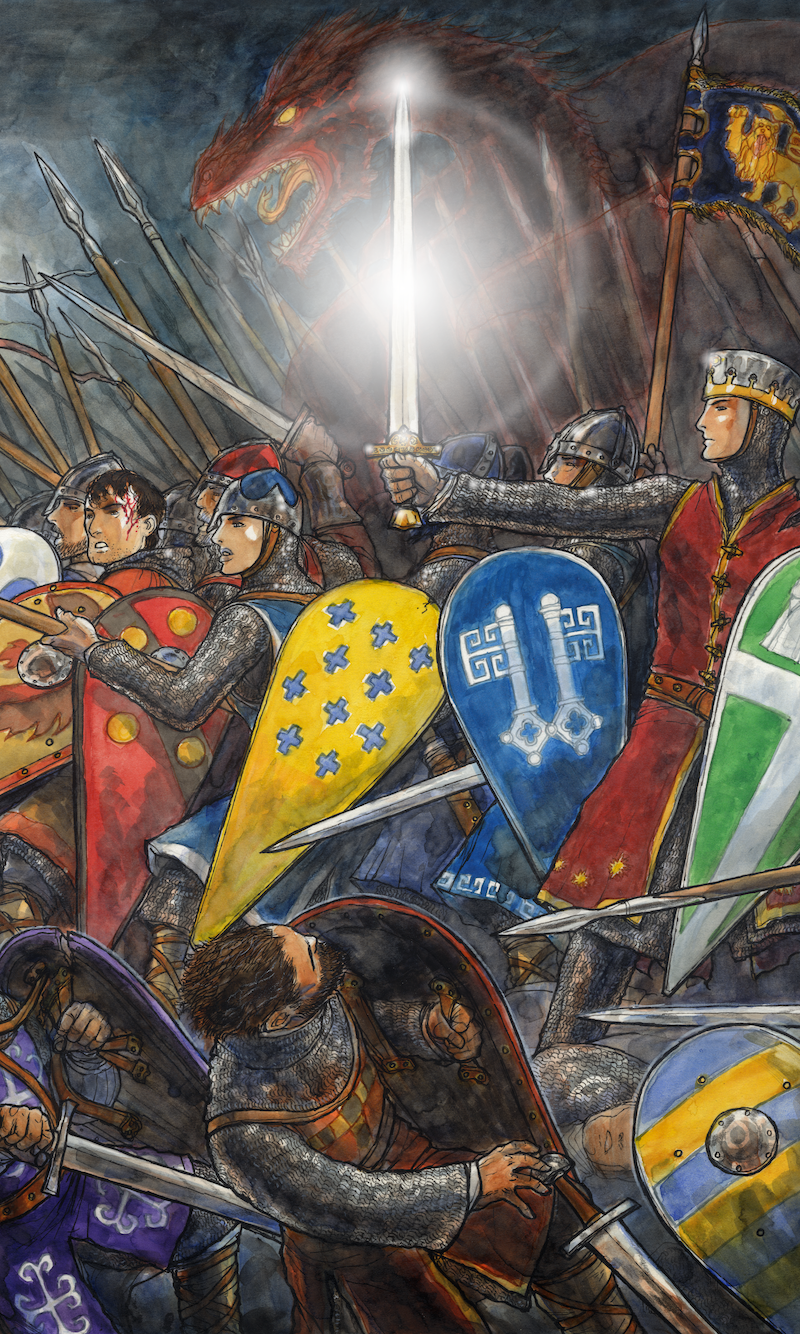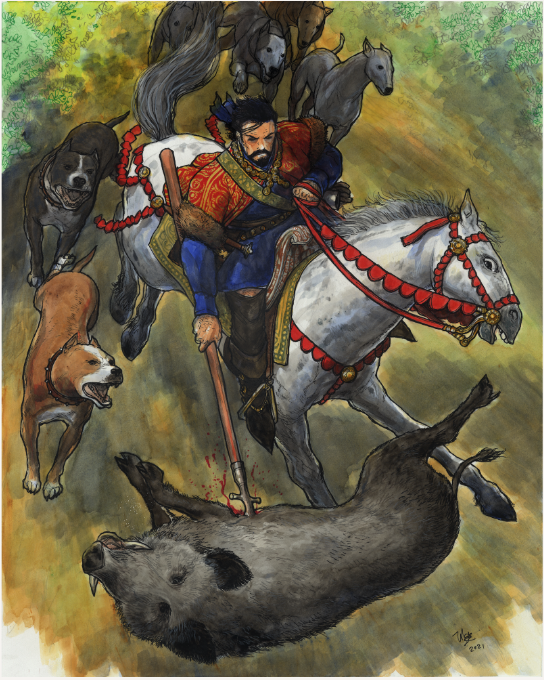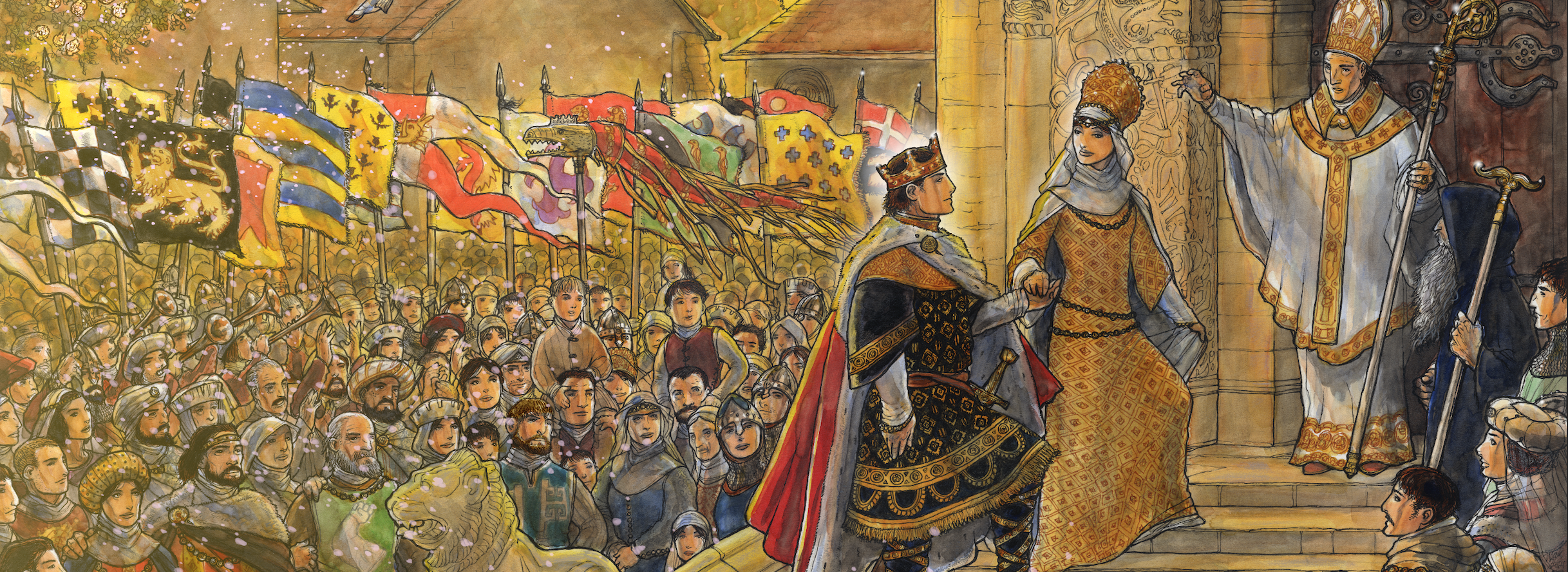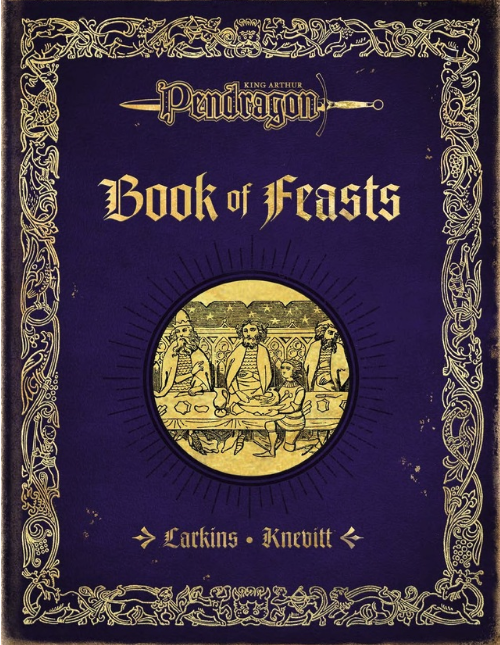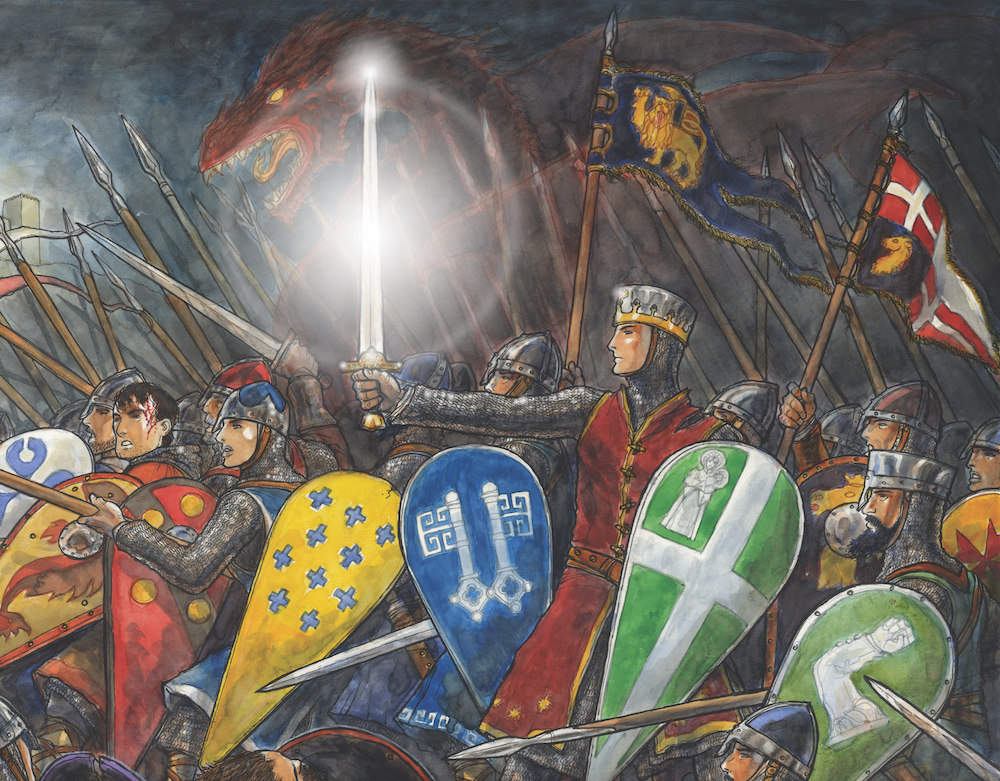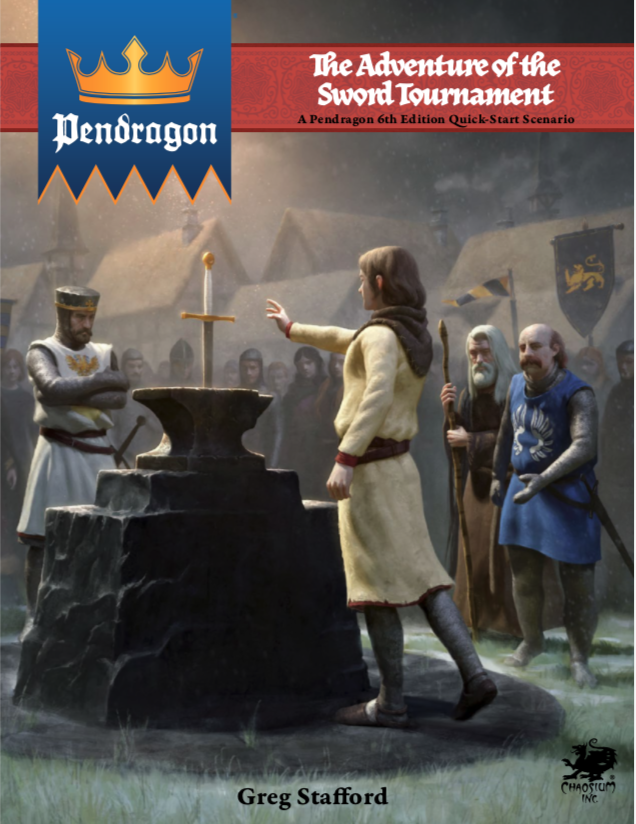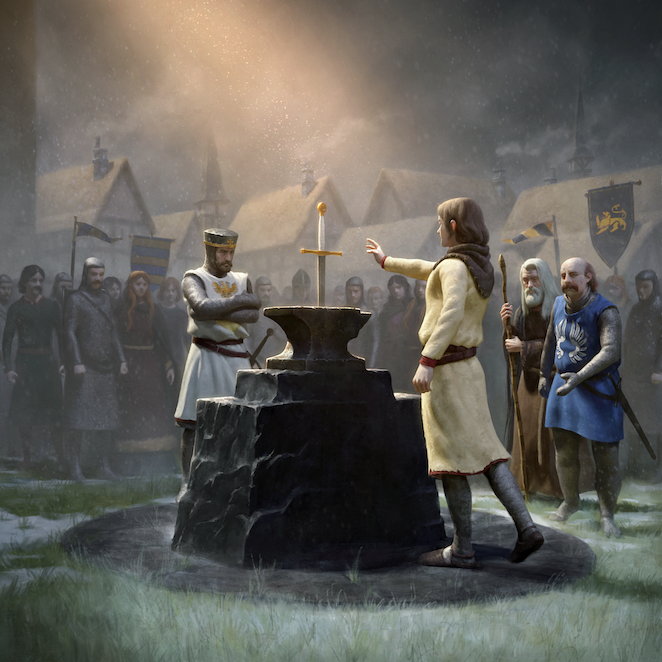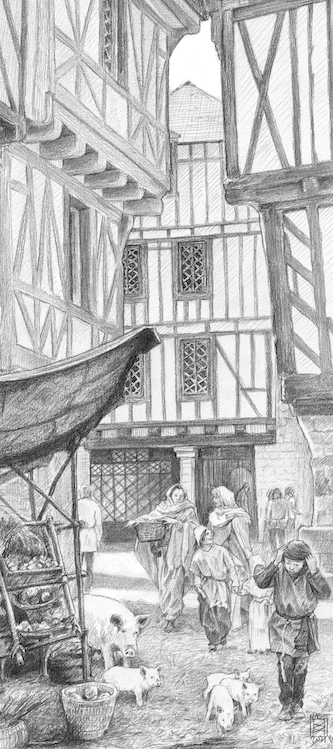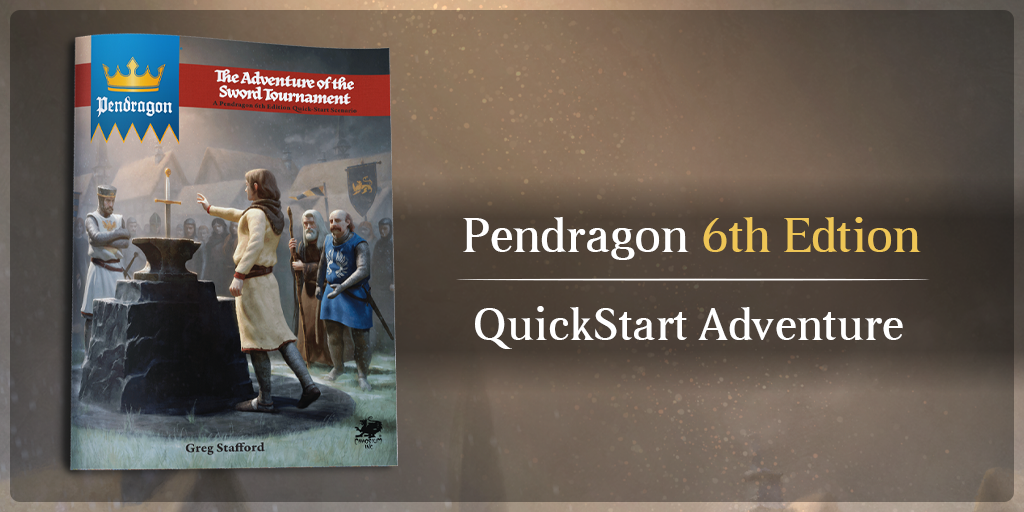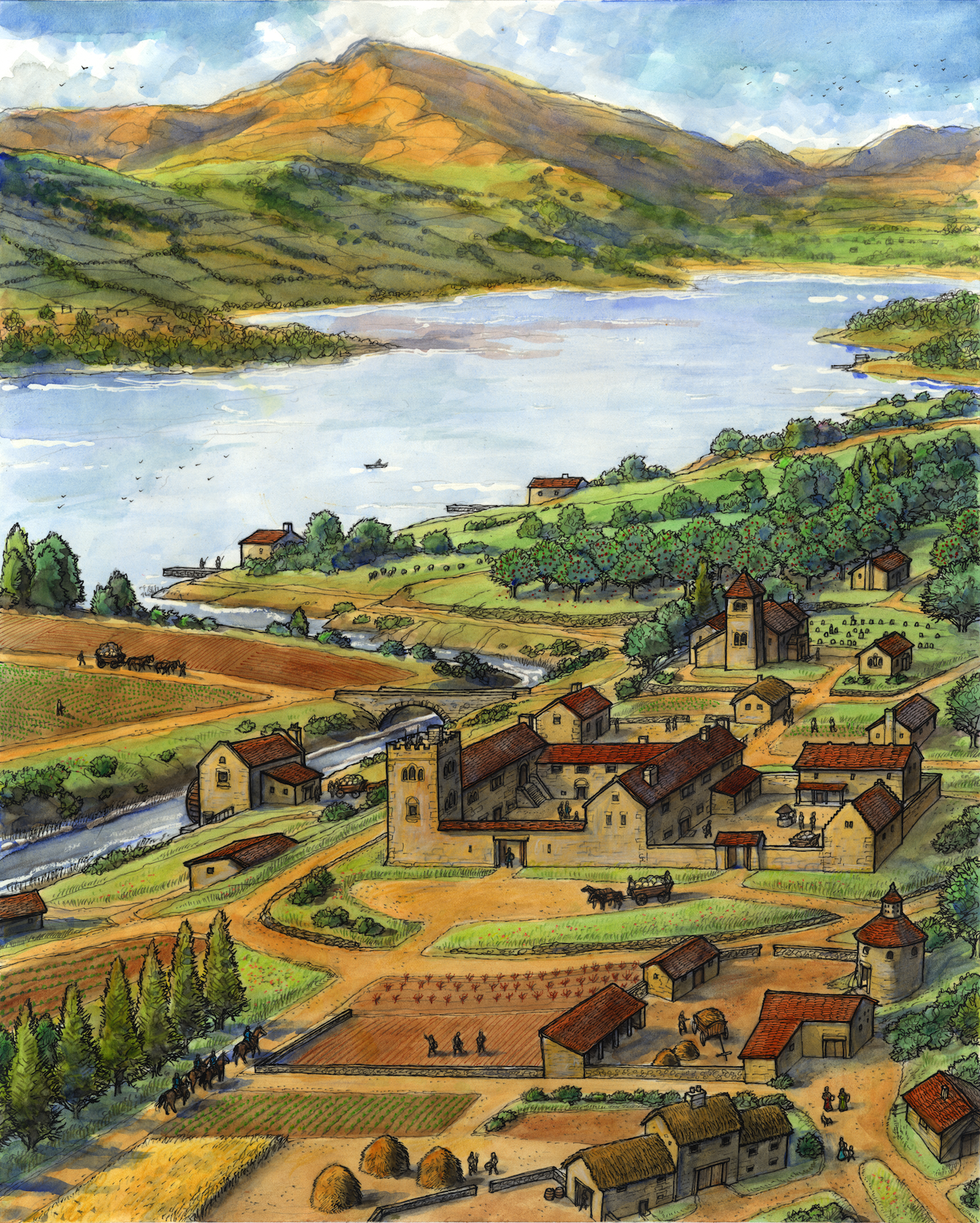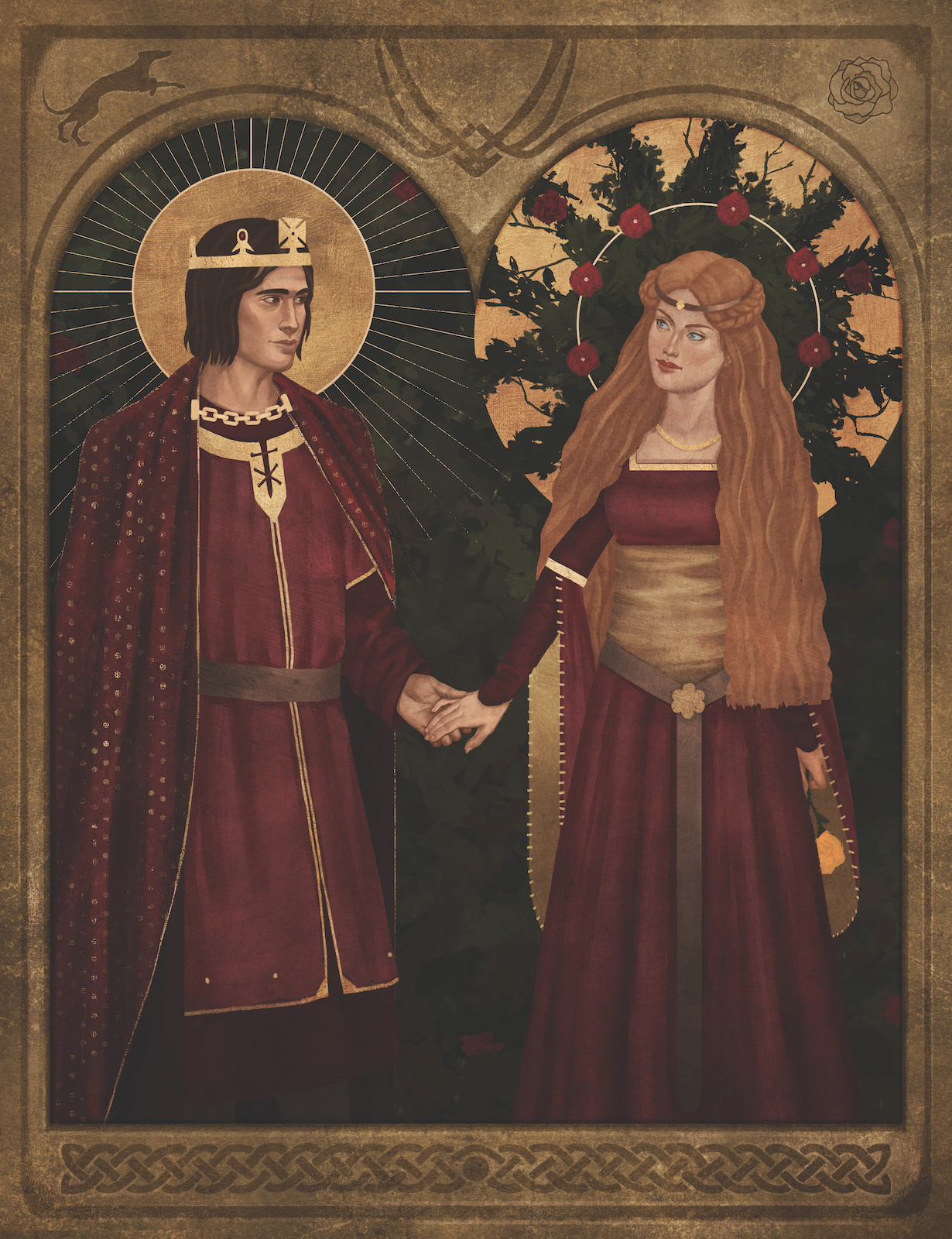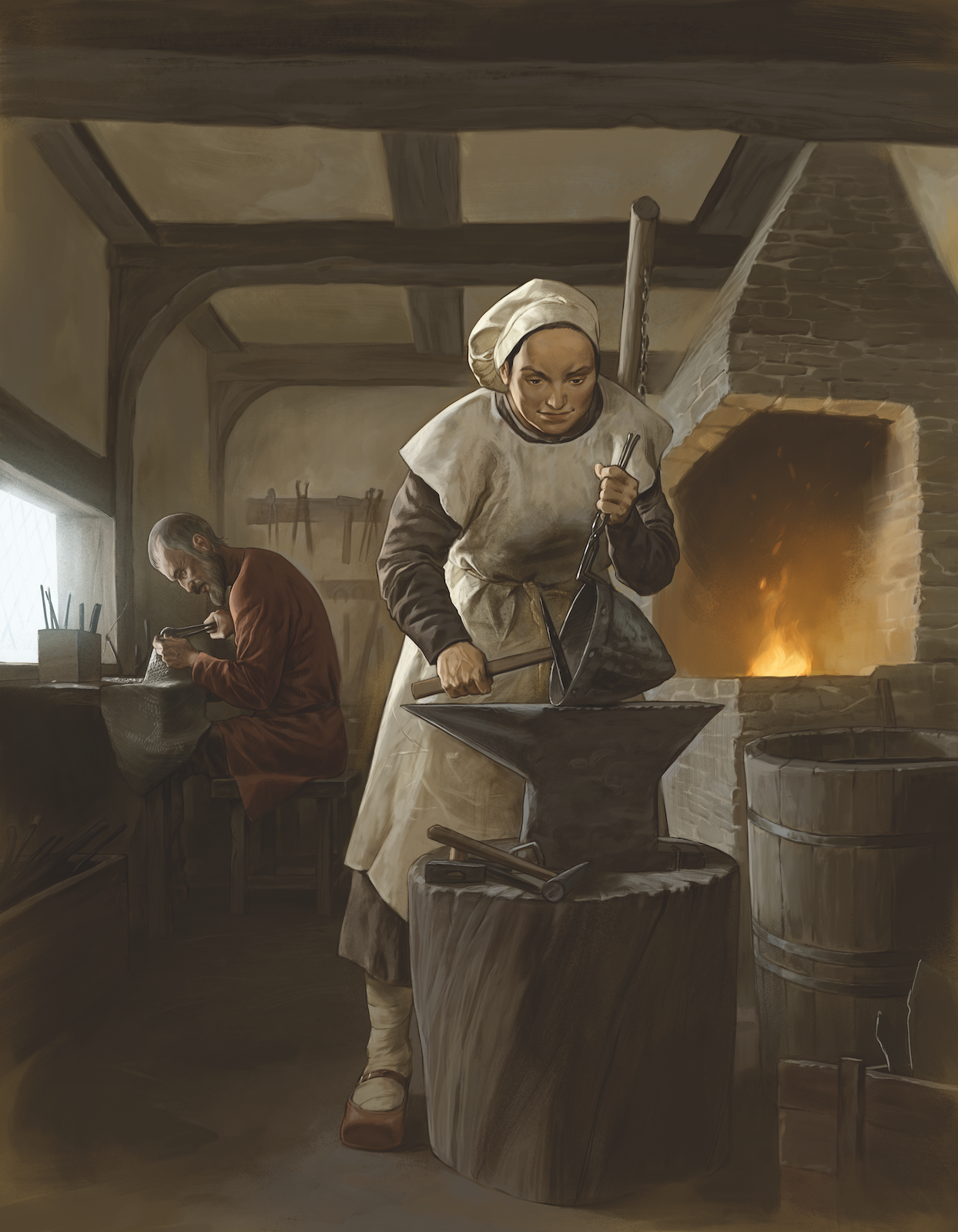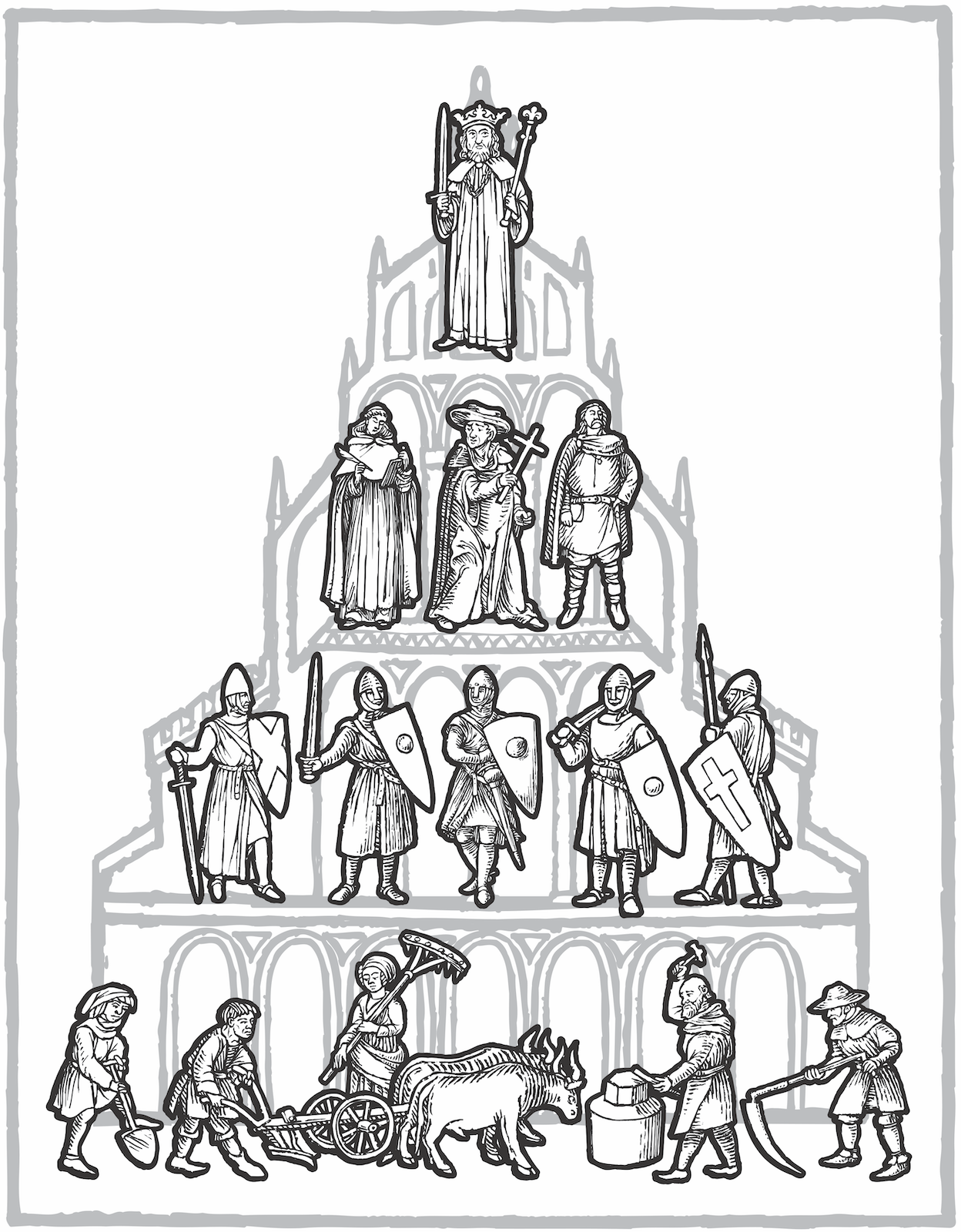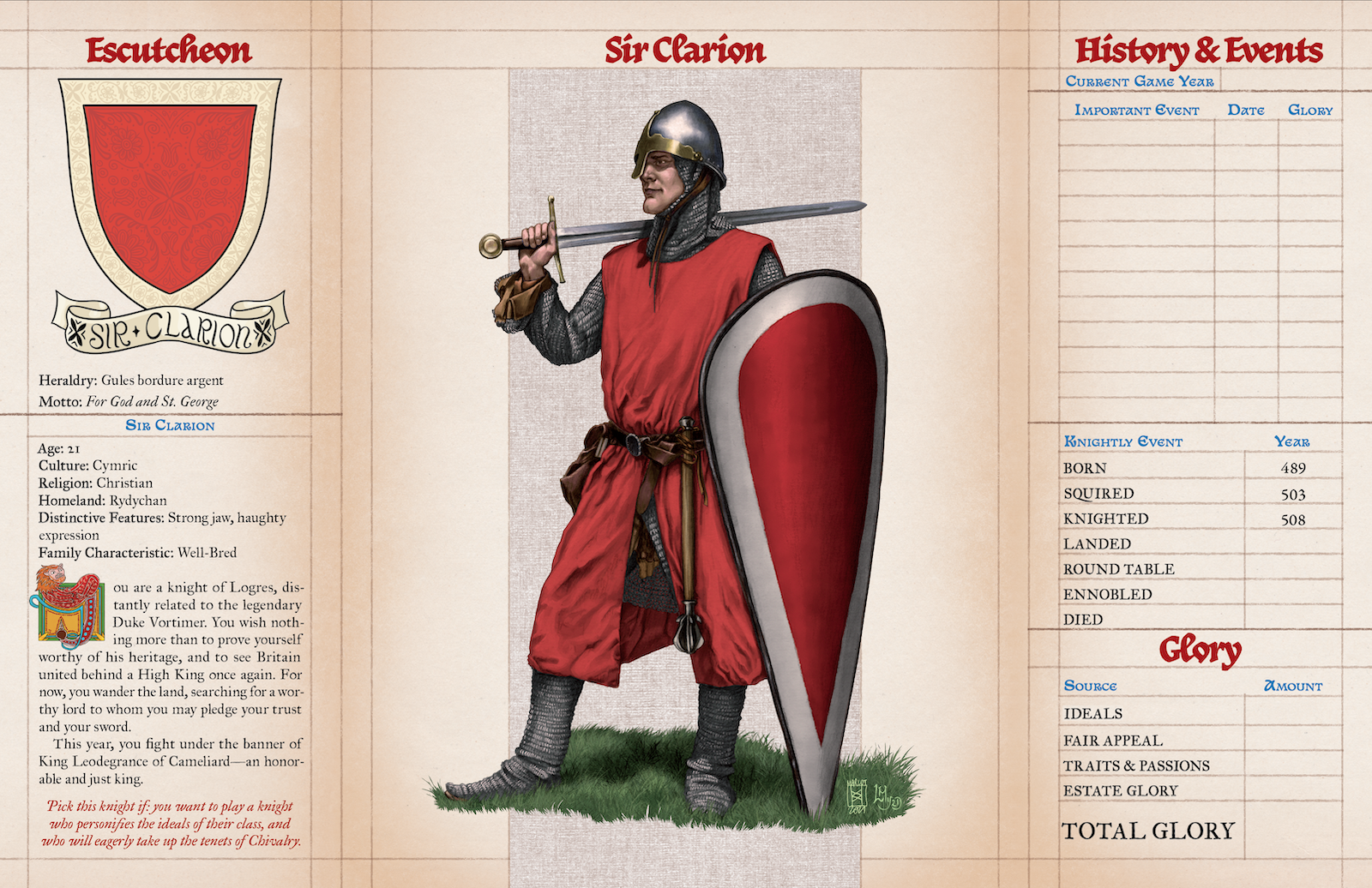By David Larkins, Pendragon line editor.
A new edition of the Pendragon RPG is coming! The intention of this series of design journals by Pendragon line editor David Larkins is to trace the path of development, starting in the early 1980s and culminating with the forthcoming new edition of the Pendragon RPG, which will be first to be wholly published by Chaosium in a quarter-century.
As we’ve
discussed before in this series, a knight’s primary duty is fighting for their lord. The ultimate expression of this comes in the clash of massed formations of warriors on the field of battle.
Every edition of Pendragon has featured a system for resolving mass battles, though this system changed and evolved over time. The new edition is no exception. In the month’s journal entry, we’re taking a look at how the new Battle System came together, and what players old and new can expect from the game experience.
The new Battle System was actually the first thing Greg Stafford handed to me for feedback and development after he brought me on board as Line Editor. We agreed that the new system needed a play experience that flowed smoothly while also centering the experience of the Player-knights in the larger context of battle. A personal goal of mine was to combine the Skirmish and Battle rules of earlier editions, so that the same system would suffice for clashes of a couple dozen all the way up to huge engagements like Badon Hill or Camlann.
In terms of rules design, the Battle System (and its cousin, the Siege Assault System) easily took up the majority of my personal writing and development time as I worked on the core rules manuscripts. It was play-tested extensively, both with my own groups as well as groups around the world. The end result, I feel, is the best iteration of the Pendragon Battle System to date.
As with personal combat, battles now move quickly—it’s quite possible to run a large battle and still have time left for the rest of the year’s events in a typical 3-4 hour session. Every Player-knight’s Battle Skill now matters. Conflicts have a natural ebb and flow to them, interspersed with explosions of unexpected activity. Most importantly (to me, personally) is the shift of earning Glory in battle: merely showing up to a battle earns you a nominal amount (it is what’s expected of knights, after all); it is in the command of troops and the defeat of worthy foes that a knight truly rakes in Glory, just as it should be!
As with previous iterations, the 6th edition Battle System keeps overall events largely abstracted, and makes no attempt at reflecting the true realities of medieval warfare. This is battle as knights of the Middle Ages wished it could be: they are the stars, and all others tremble before their might! Archers? Peasants with long sticks? Pshaw, sir! Merely chaff to be swept aside as we ride for Glory, fighting corps-a-corps against our brother knights!
(Of course, this being Pendragon, there’s no guarantee against an upstart peasant scoring a lucky hit and severely hampering your knight’s day, but we’ll move swiftly on from that unpleasant thought…)
And it is in Encounters and Opportunities, the heart of the new Battle System, where the Glory of the fight lies. These are set-piece fights against selected groups of opponents (Elite Knights on Horseback, Saxon Berserkers, etc.), fought in a variable number of Combat Rounds. At the start of a battle, the Gamemaster assembles a list of Encounters and Opportunities appropriate to the makeup of the enemy force. A small skirmish might have just one or two possible Encounters, while a larger battle likely boasts a half-dozen or more.
(Gamemasters may write out these options as a literal list. I’ve also made Encounter and Opportunity cards which I’ve used in my own games, and we will be offering these for sale in themed decks, as well as a selection to be included in the
Pendragon Starter Set.)
Each Battle Turn, the Gamemaster selects an Encounter from the list and presents it to the players. Each Player-knight then rolls their Battle Skill. If they succeed, they may add another Encounter from the list; a critical success generates an Opportunity instead—think of things like trying to capture the enemy battle standard, or raiding their baggage train.
If an Opportunity was generated, that’s what happens this Battle Turn. Otherwise, the Gamemaster rolls against the battle’s Intensity (generated at the beginning of the fight); they get to choose the Encounter if they succeed, otherwise leaving it up to the players to pick.
For example, in a fight against Saxons, the Gamemaster might select (or the scenario might dictate) a Saxon Berserker Encounter this Battle Turn. The Player-knights no doubt wish to avoid that particular meat grinder, and (thanks to three successful Battle rolls from the group) instead choose Saxon Huscarls, Saxon Ceorls, and Mercenary Knights. The Gamemaster fails the Intensity roll, so the players now have four Encounters to choose amongst. Reasoning that the Mercenary Knights offer the best odds for good ransom and the highest potential Glory awards, they select this Encounter. (Had the Gamemaster succeeded, they could choose from among the four Encounters as well—they are not necessarily bound to go with their initial selection if they like one of the players’ picks better.)
At this point, each individual Player-knight selects their posture for the Turn: Prudent, Valorous, or Reckless. (There is a Cowardly posture as well, but no self-respecting knight would choose this—rather it is imposed on them under certain conditions.)
The posture commits the knight to fighting a certain number of Combat Rounds against the chosen opponent. Being Prudent means only one round of fighting, but it reduces the group’s Morale (more on this in a moment); Reckless knights must fight three rounds, but not only boost their unit’s Morale but have the best shot at downing more than one opponent!
Morale is the crucial counterbalance in the new system. It is generated from the values of the Passions that most motivate each knight (one may be fighting for an amor, another for their lord, etc.) and all but guarantees that the Player-knights will not be constantly engaged in fighting. Rather, they will fight for two or three Battle Turns, then “retire to the rear” to regain their wind and have wounds bandaged up before once again hurling themselves into the breach. Encounters cause Morale loss—the tougher the fight, the greater the loss. As mentioned above, this may be counteracted by Reckless attacks, but unless
everyone is acting Recklessly, eventually the Morale loss becomes too much. (And a whole unit of Reckless knights is not long for the world anyway…)
Thus we have the core of the Battle System experience: a balancing act between prudence and recklessness, always striving for Glory when not otherwise forced back, bloody and battered, anxious to rejoin the fight and start the cycle again. Even in the biggest battles, the focus remains on the exploits of the individual Player-knights, and the consequences of their choices on how and whom they fight as the battle progresses.
There are, of course, many other aspects to the battle system, such as mechanics for preparing for the battle, determining who won after a battle if the outcome was in doubt, how to handle Player-knight unit (or army) commanders, madness and cowardice on the field, and so forth, but I’ve gone on enough for one journal entry already.
Hopefully you’ve seen enough to get you excited for the new system! Next time: horses, of course!
Art: by Mark Smylie